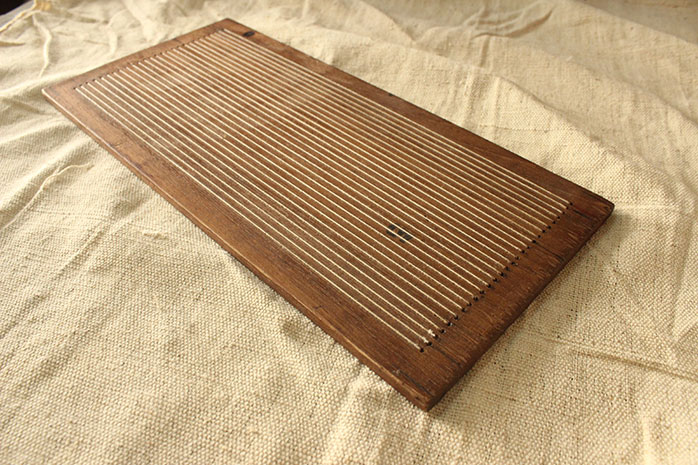The Jain manuscript text is fairly dark in texture. The calligraphic text is written along harmonious parallel lines, this particular feature of the manuscripts makes their appearance unique. It is important to understand how these parallel lines are made. The horizontal guidelines used for writing are made with a tool called Oliu (ઓળિયું/ ओळियु ).
The Oliu is made from a wooden board which is approximately 21 cm X 11 cm in size. Equidistant waxed threads are fixed one-below-the other on the board. In order to use the tool and get the impression of the horizontal grid on the paper, the paper is kept on top of the Oliu and pressed against the threads on the board. This pressure creates an impression of parallel lines on the paper; these are then used as reference points while writing the text. The Lahiya uses both the sides of a paper to write the text. The Oliu creates an impression on both sides of the paper. Since both the sides are used for writing, the Oliu is used only once to create the grid on one paper. This made writing easier as Jain manuscripts were written, and still are written on loose sheets of paper.

Oliu is used for paper manuscripts and not for Palm-leaf manuscripts. In the case of palm-leaf manuscripts, lines were drawn directly onto the dried leaf which was then used for writing upon. The Kambi was used for drawing these lines on the palm-leaf surface, the Oliu cannot be used here owing to the nature and thickness of the palm leaves.
The Oliu is a unique tool in the Jain writing tradition. This grid-making tool has significantly influenced the manuscript layout, as well as the style of the script. In the coming sections, we will further discuss, how the layout of the manuscript was shaped due to the Oliu.


